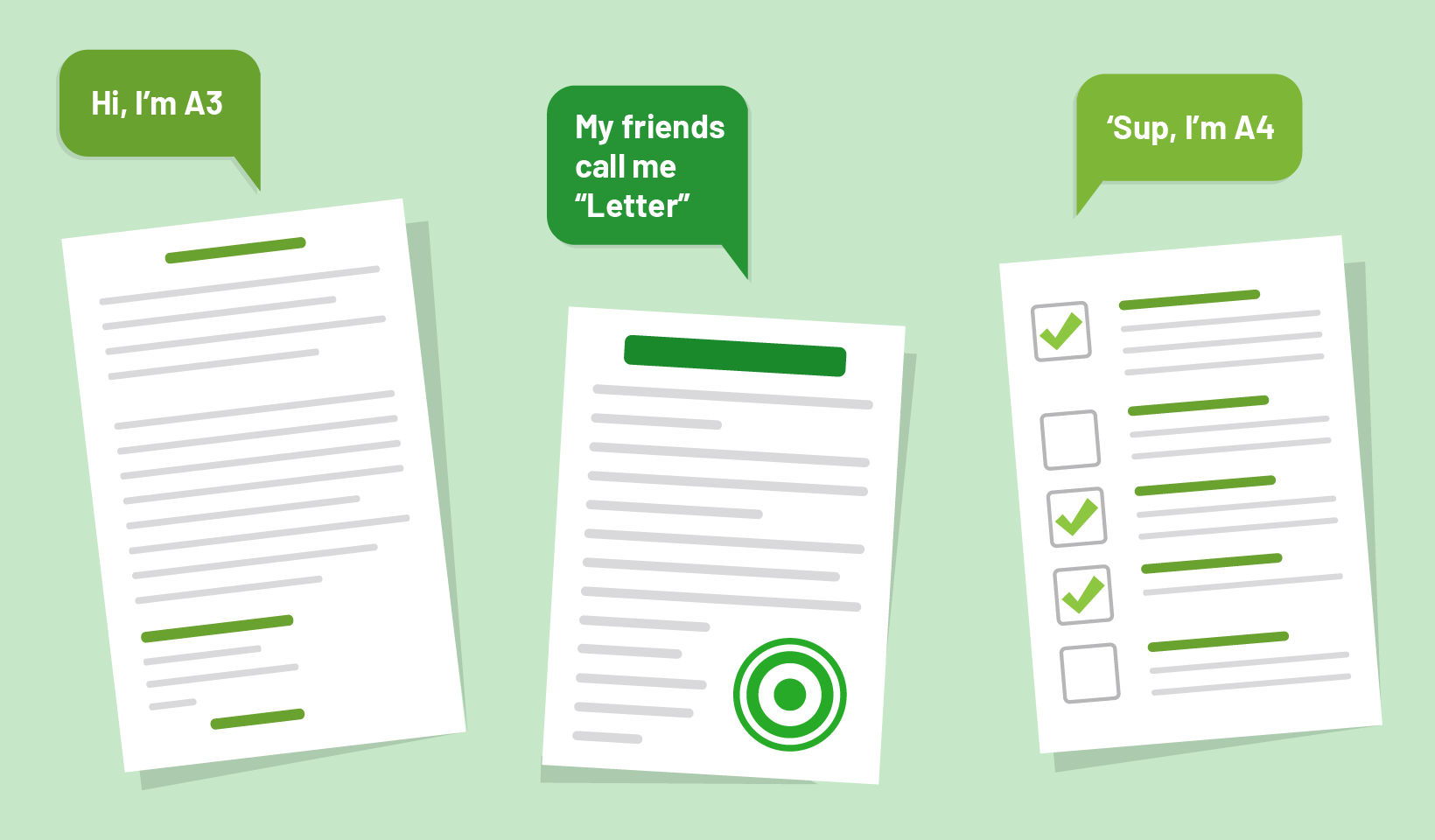
What’s the most common printer paper size? If you’ve ever printed a document, chances are you’ve used regular printer paper without thinking about its exact dimensions. Yet, choosing the right paper size is crucial for professional documents, academic work, and marketing materials.
The standard printer paper size varies by region. In North America, Letter size (8.5 × 11 inches) is the default. Internationally, A4 (210 × 297 mm) is the most common. These differences can cause formatting issues if not managed correctly.
In this post, you'll learn about standard paper sizes, their uses, printer compatibility, and how to choose the right one for your needs.
Standard Printer Paper Sizes
When it comes to printing documents, it's crucial to understand the various paper sizes available. The most common paper sizes are categorized into North American and International standards. Let's take a closer look at each category.
North American Paper Sizes
In North America, the most widely used paper sizes are:
Letter Size (8.5 x 11 inches)
This is the standard size for everyday printing, including letters, reports, and academic documents.
It originated from the traditional book sizes and became standardized to ensure uniformity in printing and distribution.
Letter size is the answer to the question, "what size paper is regular printer paper" in North America.
Legal Size (8.5 x 14 inches)
Legal size paper is typically used for legal documents, contracts, and forms that require more space than Letter size can provide.
Industries that commonly use this size include the legal profession, real estate, and accounting.
Tabloid Size (11 x 17 inches)
Also known as Ledger size, Tabloid paper is used for larger documents like spreadsheets, diagrams, and presentations.
This size is favored by designers and advertisers for creating posters and large visuals.
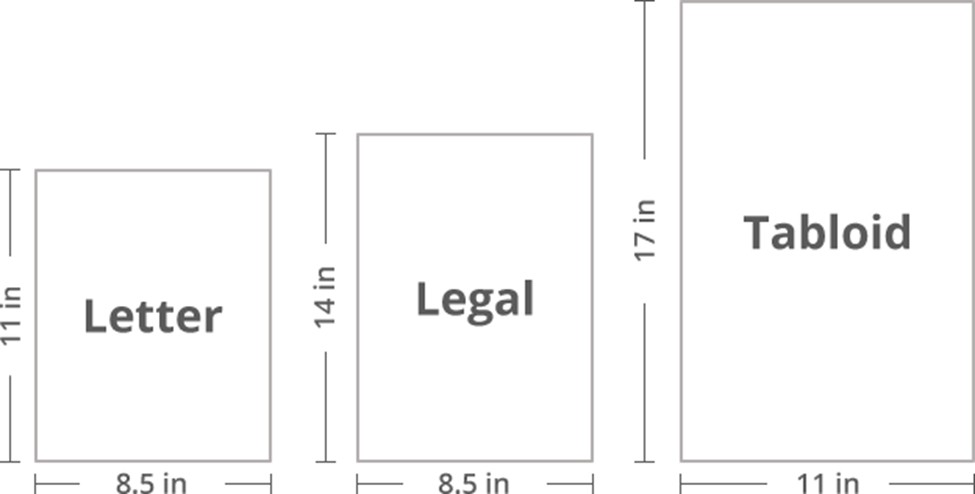
International Paper Sizes (ISO 216 Standard)
The ISO 216 standard, established in 1975, governs international paper sizes. These sizes are based on consistent aspect ratios, making them versatile for various printing needs.
A4 Size (210 x 297 mm)
A4 is the most commonly used paper size worldwide, especially in Europe and Asia. It is the standard for letters, documents, and reports.
While similar in function to Letter size, A4 is slightly longer and narrower, leading to some compatibility considerations.
A4 size addresses the question, "what is the size of regular printer paper" internationally.
A3 Size (297 x 420 mm)
A3 paper is used for larger documents, such as posters, architectural plans, and charts.
It is frequently used by designers and architects for detailed work and printing.
A5 Size (148 x 210 mm)
A5 is half the size of A4 and is commonly used for booklets, flyers, and personal notebooks.
Its compact size makes it ideal for creating small prints and promotional materials.
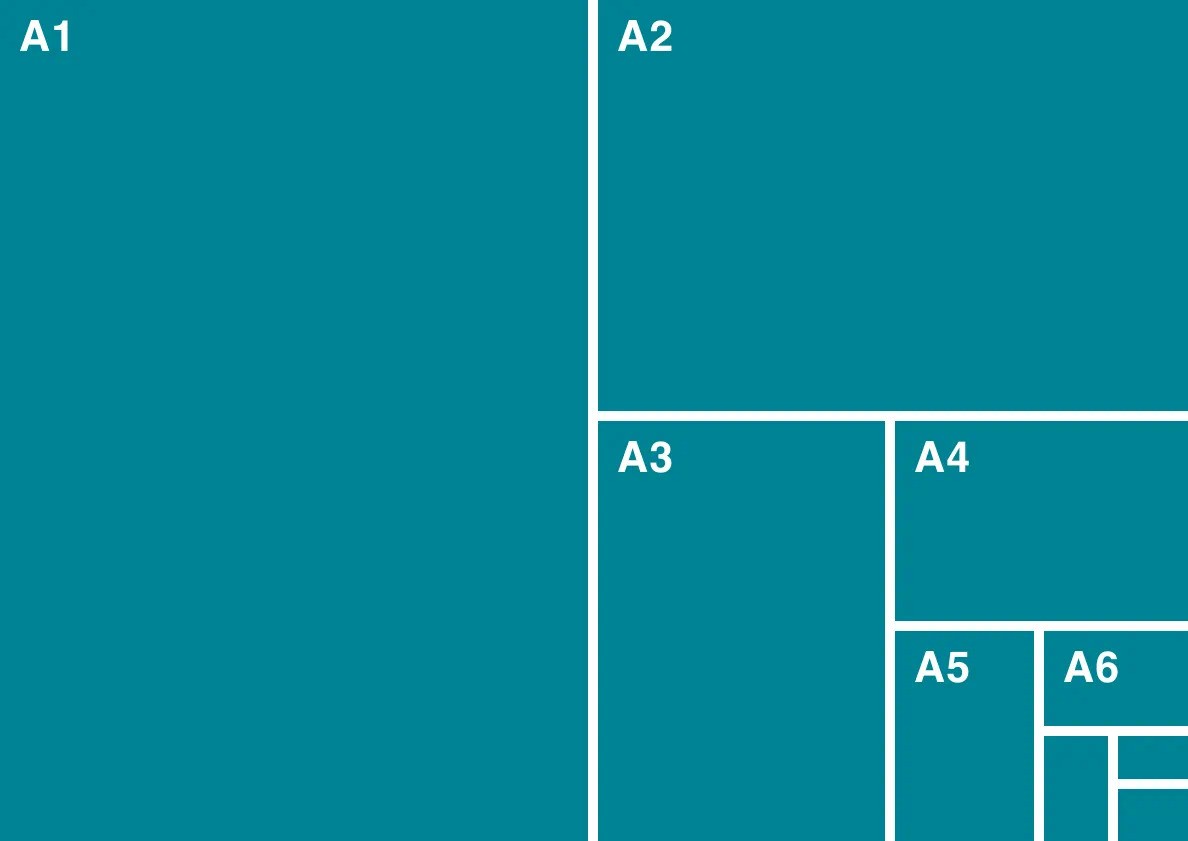
Other Paper Sizes
Beyond the standard North American and ISO sizes, there are other paper sizes used for specific purposes:
| Size |
Dimensions (inches) |
Dimensions (mm) |
Common Uses |
| Letter |
8.5 x 11 |
216 x 279 |
Standard documents, letters, reports |
| Legal |
8.5 x 14 |
216 x 356 |
Legal documents, contracts, forms |
| Tabloid (Ledger) |
11 x 17 |
279 x 432 |
Spreadsheets, diagrams, posters |
| A4 |
8.27 x 11.69 |
210 x 297 |
International standard for letters and documents |
| A3 |
11.69 x 16.54 |
297 x 420 |
Posters, architectural plans, charts |
| A5 |
5.83 x 8.27 |
148 x 210 |
Booklets, flyers, personal notebooks |
Types of Printer Paper
Choosing the right printer paper impacts print quality, durability, and usability. Paper types vary based on weight, texture, and finish. Below, we explore the most common and specialized options.
Common Types of Printer Paper
Copy Paper
Description: The most commonly used printer paper for daily tasks. Lightweight, versatile, and cost-effective.
Uses: Office documents, school assignments, memos, general printing.
Weight & Finish Options:
Standard (20 lb): Best for everyday printing.
Premium (24 lb+): Smoother texture, reduces ink bleed.
Finish: Typically uncoated for easy writing and fast ink absorption.
Why It’s Important: Defines "what is regular printer paper size" for home and office use.
Printing Paper
Specialty Papers
Cover Stock Papers
Description: Thick, durable paper for premium prints.
Uses: Book covers, presentation folders, greeting cards.
Why It’s Used: Resistant to bending, adds a professional touch.
Coated and Uncoated Papers
Coated Paper:
Features: Glossy or matte finish, enhances print quality.
Uses: Marketing materials, magazines, product packaging.
Uncoated Paper:
Features: Porous surface, absorbs ink quickly.
Uses: Office documents, writing pads, forms.
Brand-Specific Papers
HP Printer Paper
Features & Benefits:
Designed for HP printers, ensuring smooth feeding.
Available in various weights and finishes for diverse printing needs.
Best for: High-volume printing, business reports, inkjet and laser printers.
Hammermill Printer Paper
Popular Models & Uses:
Hammermill Premium Multipurpose (24 lb): Smoother, brighter for color printing.
Hammermill Fore Multi-Purpose (20 lb): Affordable for high-volume black-and-white printing.
Hammermill Premium Color Copy (32 lb): Heavyweight, best for high-resolution images.
Here's a comparison table of the different types of printer paper:
| Paper Type |
Characteristics |
Common Uses |
| Copy Paper |
Lightweight, smooth finish, 20 lb weight |
Everyday documents, forms |
| Printing Paper |
Higher quality, various weights and finishes |
Sharp images, vibrant colors |
| Cover Stock Papers |
Thicker, more durable |
Book covers, premium prints |
| Coated Papers |
Smooth finish |
High-resolution images |
| Uncoated Papers |
Rougher texture |
Text-heavy documents |
| HP Printer Paper |
Reliable, various weights and finishes |
Versatile use, suitable for most printers |
| Hammermill Paper |
Smooth texture, consistent quality |
High-volume printing, home and office use |
When choosing printer paper, consider the following factors:
The purpose of your printed materials
The desired quality and appearance
Compatibility with your printer
Budget constraints
Paper Weight and Thickness for Regular Printer Paper
Choosing the right paper weight and thickness improves print quality, durability, and performance. Understanding GSM (grams per square meter) and lb (pound weight) helps select the best option for different printing needs.
What Does Paper Weight (GSM & lb) Mean?
Paper weight refers to the density or thickness of the paper. It is typically measured in either grams per square meter (GSM) or pounds (lb). The higher the GSM or lb value, the thicker and heavier the paper.
GSM: This metric system measurement is commonly used internationally. It represents the weight of the paper in grams per square meter.
lb: In North America, paper weight is often expressed in pounds (lb). This measurement is based on the weight of a ream (500 sheets) of paper cut to a specific size.
How Paper Weight Affects Printing Quality
The weight of the paper can greatly influence the outcome of your printed materials:
Heavier paper (higher GSM or lb) tends to be more opaque, reducing the visibility of content printed on the reverse side.
Thicker paper is less likely to curl or wrinkle during the printing process, resulting in a more professional appearance.
Higher paper weights can enhance the vibrancy and sharpness of colors and images.
Common Paper Weights for Regular Printer Paper
When it comes to regular printer paper, there are a few common weights to consider:
20 lb Paper (Standard Office Use)
This is the most common weight for everyday office printing.
It is suitable for basic text documents, internal memos, and drafts.
20 lb paper strikes a balance between affordability and performance.
24 lb Paper (Premium Quality)
24 lb paper offers a step up in quality compared to 20 lb paper.
It is ideal for important documents, presentations, and external correspondence.
The slightly heavier weight provides a more substantial feel and improved durability.
32 lb Paper (High-Resolution Printing)
32 lb paper is a top choice for printing high-resolution images and graphics.
It offers excellent opacity and prevents show-through of ink.
This weight is perfect for creating professional brochures, flyers, and reports.
Choosing the Right Paper Thickness for Your Needs
When selecting the appropriate paper weight for your regular printer paper, consider the following factors:
Purpose: Determine the intended use of your printed materials. Everyday documents can use lighter weights, while important presentations may require heavier stocks.
Printer Compatibility: Check your printer's specifications to ensure it can handle the desired paper weight. Some printers may have limitations on the maximum thickness they can accommodate.
Budget: Higher paper weights typically come with a higher price tag. Consider your budget constraints and the importance of the printed materials when making your choice.
| Paper Weight |
GSM Range |
Common Uses |
| 20 lb |
75-90 GSM |
Standard office use, basic text documents |
| 24 lb |
90-100 GSM |
Premium quality, presentations, important documents |
| 32 lb |
120-140 GSM |
High-resolution printing, brochures, flyers |
Practical Applications of Different Paper Sizes
Choosing the right paper size impacts document clarity, printing efficiency, and professional presentation. Different industries and tasks require specific paper sizes to ensure the best results.
Office Printing and Everyday Use
Common Paper Sizes in Office Settings
Most office printers support Letter (8.5 × 11 inches), Legal (8.5 × 14 inches), and Tabloid (11 × 17 inches).
| Paper Size |
Dimensions (inches) |
Common Uses |
| Letter |
8.5 × 11 |
Reports, emails, standard office printing |
| Legal |
8.5 × 14 |
Contracts, legal documents, agreements |
| Tabloid |
11 × 17 |
Spreadsheets, posters, visual presentations |
Letter size is the default regular printer paper size in North American offices.
Legal paper offers more space for text-heavy documents.
Tabloid size allows large prints for charts, diagrams, and advertisements.
Office Depot Paper Options
Popular Choices:
Multiuse copy paper (20 lb): Standard for bulk printing.
Premium inkjet paper (24 lb+): Higher contrast, less bleed-through.
Recycled paper: Eco-friendly alternative for sustainability.
Recommendations:
Use 20 lb paper for drafts and internal reports.
Use 24 lb+ paper for client-facing documents and presentations.
Use heavyweight paper (32 lb) for official documents and marketing materials.
Professional and Industrial Uses
Paper Sizes in Professional Settings
Industries such as design, engineering, and publishing use a variety of paper sizes.
| Paper Size |
Dimensions (mm) |
Common Uses |
| A4 |
210 × 297 |
International reports, contracts, academic papers |
| A3 |
297 × 420 |
Large-scale designs, engineering plans, posters |
| Tabloid |
279 × 432 |
Magazines, architectural drawings, presentations |
Copier Paper
Designed for high-volume printing.
Weight: Typically 20 lb for everyday copying and 24 lb+ for sharper results.
Uses: Internal documentation, mass distribution reports, large office print jobs.
Copy Machines & Paper Compatibility
Most copiers handle Letter, Legal, and A4 as defaults.
High-capacity printers support A3, Tabloid, and specialty sizes.
Key Considerations:
Printing for Marketing and Design
Paper Sizes for Brochures, Flyers, and Marketing Materials
Common Choices:
A4 / Letter: Standard for promotional handouts.
A3 / Tabloid: Better for posters, advertisements, and infographics.
A5 / Half-Letter: Compact, ideal for flyers and booklets.
Best Practices:
Glossy paper enhances images and colors.
Matte paper is better for professional reports.
Thicker stock gives a premium feel to brochures and business cards.
Importance of Selecting the Right Paper Size and Type
Size impacts readability and engagement.
Thin paper feels cheap; thick paper conveys professionalism.
Proper paper choice ensures the final product looks polished and effective.
International vs. North American Paper Sizes
When dealing with printing projects across different regions, it's essential to understand the differences between international and North American paper sizes. This knowledge will help you ensure your documents are compatible and maintain a professional appearance, no matter where they are printed.
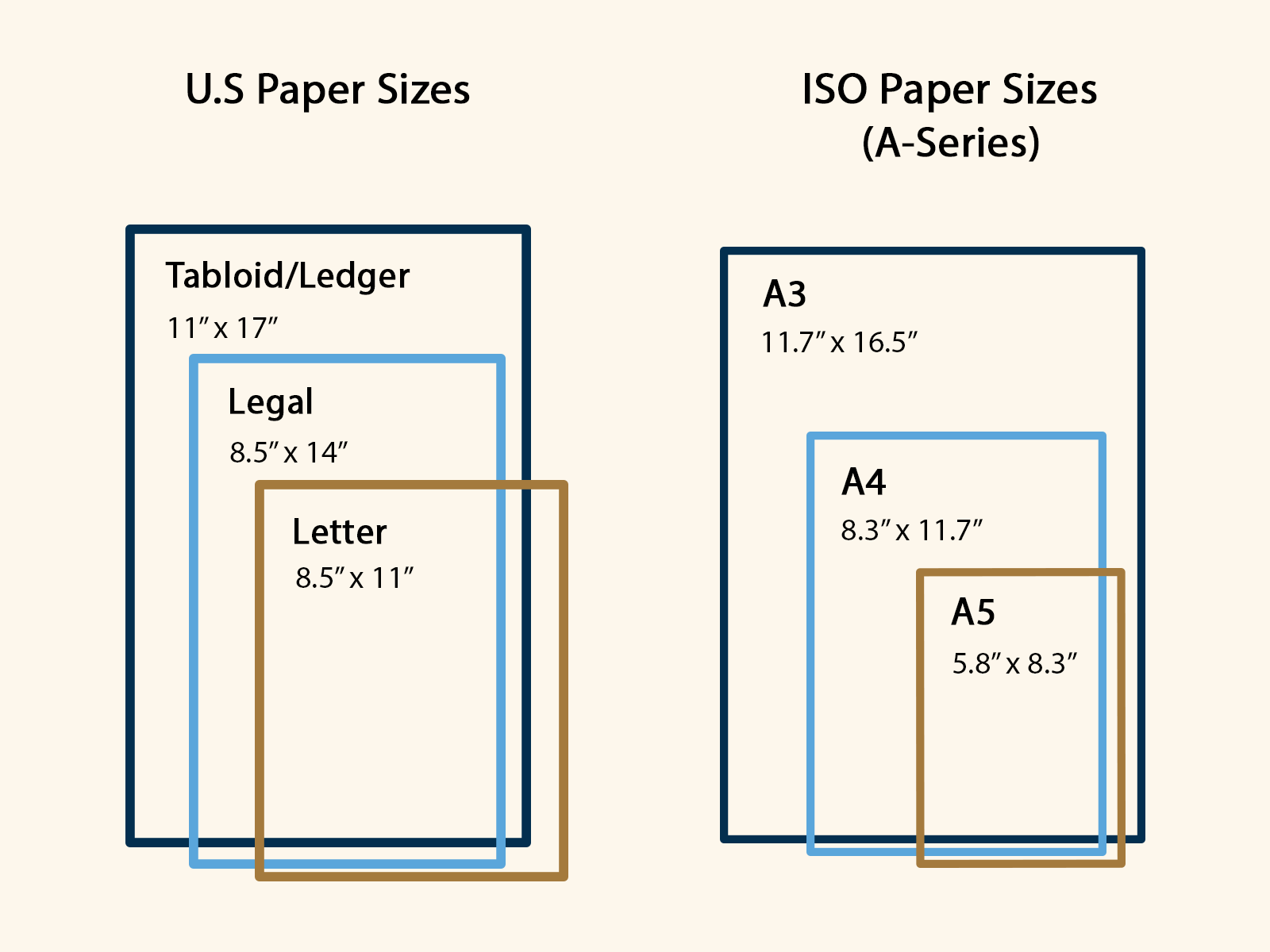
Comparison and Compatibility
The main difference between international and North American paper sizes lies in the standards they follow:
International paper sizes adhere to the ISO 216 standard, which includes the A, B, and C series.
The most common sizes are A4 (210 x 297 mm), A3 (297 x 420 mm), and A5 (148 x 210 mm).
These sizes are based on a consistent aspect ratio of 1:√2, which allows for easy scaling and minimal waste when cutting larger sheets.
North American paper sizes follow their own set of standards, with the most common being:
When choosing the right paper size for international printing needs, consider the following tips:
Determine the standard used in the target country or region.
If unsure, opt for ISO 216 sizes like A4, as they are widely accepted and compatible with most printers worldwide.
When designing documents for international use, be aware of the slight differences in dimensions between ISO and North American sizes to avoid layout issues.
Understanding "what is the size of regular printer paper" across regions is crucial for ensuring compatibility and professionalism in international printing projects.
Paper Size Standards
ISO 216 Standard
The ISO 216 standard, developed by the International Organization for Standardization, was first introduced in 1975. It has since been adopted by most countries worldwide, with the exception of the United States and Canada.
Key features of the ISO 216 standard:
Based on a consistent aspect ratio of 1:√2
Sizes are defined by the A, B, and C series, with A0 having an area of 1 square meter
Each subsequent size (e.g., A1, A2) is half the area of the previous one
The ISO 216 standard ensures consistency and ease of use across different regions and applications.
American National Standards
In the United States, paper sizes are defined by the American National Standards Institute (ANSI). These sizes have a long history and are deeply ingrained in the country's office and printing practices.
Key differences between ANSI and ISO standards:
ANSI sizes have a less consistent aspect ratio, making scaling and resizing more difficult
The most common ANSI sizes (Letter, Legal, Tabloid) do not have a direct equivalent in the ISO standard
When answering the question "what size paper is regular printer paper" in the US, Letter size (8.5 x 11 inches) is the most common response.
| ISO 216 Size |
Dimensions (mm) |
Equivalent ANSI Size |
Dimensions (inches) |
| A4 |
210 x 297 |
Letter |
8.5 x 11 |
| A3 |
297 x 420 |
Tabloid |
11 x 17 |
| A5 |
148 x 210 |
- |
- |
| - |
- |
Legal |
8.5 x 14 |
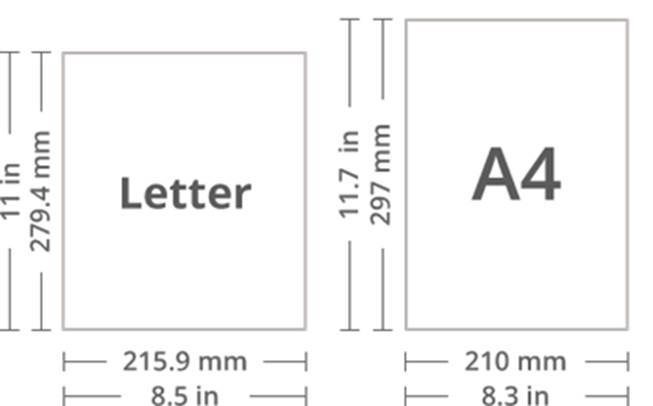
Conclusion
The regular printer paper size varies by region. Letter (8.5 × 11 inches) is standard in North America, while A4 (210 × 297 mm) dominates internationally. Understanding these differences prevents formatting issues and printing errors.
Choosing the right paper size ensures clear, professional, and well-formatted documents. It affects business reports, legal contracts, marketing materials, and industrial printing.
For office use, Letter and A4 work best. A3 and Tabloid suit design and large-format prints. Heavier paper improves durability and print quality.
Select paper size and type based on your location, document purpose, and printer compatibility for optimal results.
FAQs on Printer Paper Sizes
Q: What is the standard printer paper size?
A: Letter (8.5 x 11 inches) and A4 (210 x 297 mm) are the most common standard sizes. Letter is the regular printer paper size in North America, while A4 is the international standard.
Q: What is the difference between A4 and Letter size?
A: A4 is slightly longer and narrower than Letter. A4 measures 210 x 297 mm, while Letter is 8.5 x 11 inches. A4 is more common internationally, and Letter is the standard in North America.
Q: What are the dimensions of Legal size paper?
A: Legal size paper measures 8.5 x 14 inches. It is often used for contracts and legal documents that require more space than Letter size.
Q: How do I choose the right paper size for my printer?
A: Check your printer's specifications for supported sizes. Most printers handle Letter and A4. Consider your printing needs and the number of sheets you use regularly.
Q: Can I use A4 paper in a Letter size printer?
A: Many printers can handle both A4 and Letter, but check your printer's manual for compatibility to ensure proper fit and function.
Q: What paper size is best for printing photos?
A: Common photo paper sizes are 4x6, 5x7, and 8x10 inches. Ensure your printer supports these sizes for the best quality.
Q: Why are there different paper size standards?
A: Historical and practical reasons led to the development of regional standards. The ISO 216 standard was introduced in 1975 for international use, while North American sizes have roots in traditional paper dimensions.
Q: How do I convert between paper sizes?
A: Use online converters or charts to switch between sizes like A4 and Letter. Keep in mind the aspect ratios and their effects on document layout.
Q: What is the aspect ratio of A4 paper?
A: A4 has an aspect ratio of 1:√2, allowing for easy scaling of documents while maintaining proportions.
Q: What is the weight of standard copy paper?
A: Standard copy paper is typically 20 lb, which is ideal for everyday printing. Heavier papers are available for higher-quality prints.
Q: Is there a difference between regular and brand multiuse paper?
A: Brand multiuse paper often promises higher quality and performance. It is commonly available in bulk, such as 5000-sheet packs.
Q: What are some widely used paper sizes?
A: Widely used sizes include Letter (8.5x11), A4, Legal (8.5x14), and Tabloid (11x17). These sizes cover most printing needs, from office documents to large-format designs.
Q: How does paper size affect my printer's performance?
A: Using the correct size ensures smooth operation without jams. Paper should feed properly when matched with printer specifications.
Q: Can I use international letterhead size A4 in North American printers?
A: Many North American printers can handle A4, but always check compatibility to ensure proper fit and function.
Q: Why are certain paper sizes more commonly used in specific regions?
A: Historical and practical factors influence regional preferences. For example, Letter is standard in North America, while A4 is prevalent internationally.
Q: What is the normal size for office documents?
A: Letter size (8.5x11) is the standard for most office documents in North America, while A4 is the norm in many other parts of the world.
Q: What paper size should I use for contracts?
A: Legal size (8.5x14) is commonly used for contracts due to its extra length, allowing more space for detailed information.
References
[1] https://en.wikipedia.org/wiki/Paper_size
[2] https://blog.flextg.com/printer-paper-sizes
[3] https://www.neenahpaper.com/resources/paper-101/international-sizes
[4] https://1800officesolutions.com/a-guide-for-printer-paper-sizes/
[5] https://cartridgeworldusa.com/blog/what-size-is-printer-paper
[6] https://www.stptexas.com/blog/printer-paper-size-guide
[7] https://www.gflesch.com/blog/printer-paper-size
[8] https://www.papercut.com/blog/print_basics/printer-paper-sizes-explained-printing-basics-101/





























